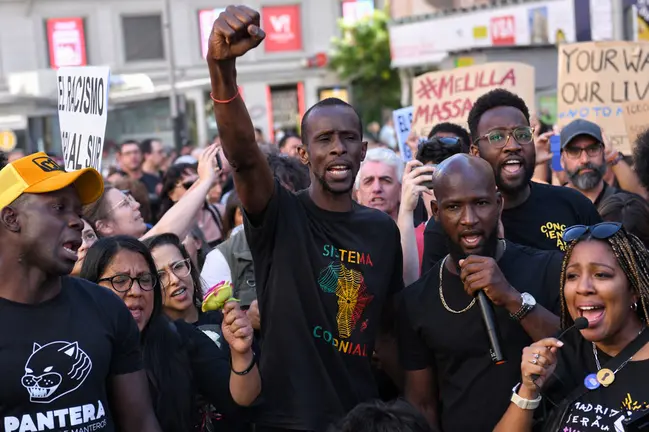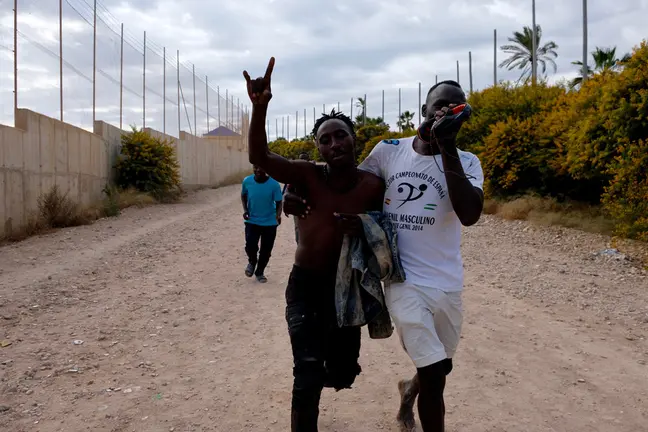Refugees, asylum-seekers and displacement have in recent years become a hot topic in the political and public debate. Nevertheless, the topic is surrounded by myths and, too often, misinformation and lack of facts.
Those myths and misinformation have been used by populist political movements in several countries to promote xenophobia.
The United Nations Refugee Agency (UNHCR) in Northern Europe has published a brochure that lists 10 important facts on refugees, for a fact-based discussion. Data and figures are from UNHCR reports on migration, asylum and current global trends.
One.- 37,000 people were displaced every day in 2018
Global displacement is at a record high with conflicts becoming more violent and protracted, and root causes more complex. At the end of 2018, around 70,8 million people were forcibly displaced as a result of persecution, conflict, violence, and human rights violations. This amount is double compared to 20 years ago.
Two.- 80% of refugees live in places bordering their homes
80% of refugees are hosted by countries neighbouring their countries of origin. This includes some of the world's poorest countries, which host one third of all refugees by doing a great effort. Only 16% of the world's refugees are hosted in the rich and developed parts of the world.
Three.- 4 million Venezuelans left the country since 2015
Violence, threats, human rights violations as well as lack of food, medicine and basic services have led to the largest displacement crisis in recent Latin American history. More than 4 million Venezuelans have left their country since 2015. Although the majority need international protection, only around half a million of Venezuelans who have left the country have taken the step to formally apply for asylum.
Four.- Millions are displaced within their own countries
While 25.9 million refugees have fled their countries, there are 41.3 million internally displaced persons who have fled within their own countries. Even if they have not crossed the border, their protection and humanitarian needs are often similar to those of refugees. The countries with the largest population of internally displaced are Colombia, Syria and the Democratic Republic of Congo.
Five.- Arrivals to Europe dropped significantly
The number of refugees and migrants crossing the Mediterranean and arriving in Europe has decreased substantially. In 2018, a total of 141,472 people arrived in Europe, compared to 1,032,408 people in 2015. Despite the 86% decrease in arrivals, the death rate on the Mediterranean has tragically gone up. Last year, on average 6 people lost their lives every day in their attempts to reach Europe, as explained in the UNHCR report 'Desperate Journeys 2018'.
Six.- Two-thirds of all refugees come from five countries
Altogether, more than two-thirds of all refugees worldwide come from just five countries, with Syrian refugees accounting for almost one-third of the world's refugee population. They are followed by people from Afghanistan, South Sudan, Myanmar and Somalia. In Somalia, the violent conflict forcing people to flee their homes has lasted for almost 30 years.
Seven.- More than 90% of global resettlement needs are unmet
As the number of vulnerable refugees, whom UNHCR estimates cannot receive adequate protection in their current host country, is growing, the need for places for resettlement is urgent. In 2019, UNHCR estimates that 1.4 million refugees are in need of resettlement. However, only 92,400 resettlement places were provided by 25 states in 2018.
Eight.- Half of the world refugees are children
Half of the refugee population worldwide are children and youth below the age of 18, more than 110,000 are separated from their families. In 2018, a total of 27,600 unaccompanied and separated children sought asylum in countries around the world. Forced displacement has severe consequences for children's education opportunities, and currently 4 million refugee children are out of school.
Nine.- Most refugees live in urban areas, not camps
More than 60% of the world's refugees live in towns and cities, where they often have a better chance to earn a living, go to school and build a new life. However, while camps are only intended as temporary solutions in emergencies, many refugees still end up spending decades in temporary shelters around the world due to the lack of alternative solutions.
Ten.- It is never a crime to seek asylum
The right to seek asylum in another country for those who have lost the protection of their own country, is enshrined in Article 14 of the Universal Declaration of Human Rights. The Refugee Convention is the first treaty which turned the ideals of the Declaration into legally binding obligations. It is therefore not a crime to seek asylum, even if the person has entered the country irregularly, the UNHCR remarks.










